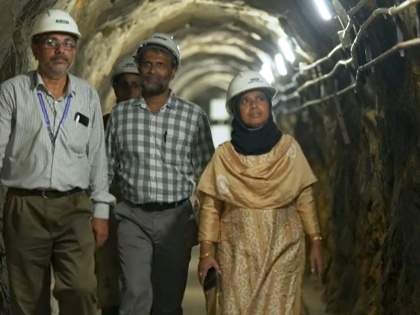Unsung women engineers broke the ceilings and motivated the next-gen
By Anubha Jain | Published: September 14, 2023 06:03 PM2023-09-14T18:03:49+5:302023-09-14T18:05:27+5:30
Engineer’s Day is when we usually talk about the contributions of male engineers, but a few unsung women engineers ...

Unsung women engineers broke the ceilings and motivated the next-gen
Engineer’s Day is when we usually talk about the contributions of male engineers, but a few unsung women engineers broke the ceilings and motivated the next generation by following in their footsteps. Women had a small but established role in engineering and technical professions. In the 1970s there were very rare women engineers. In this vein, KN Malathi is the leading woman AGM at Hindustan Aeronautics Ltd. (HAL) who was the first lady design trainee recruited by the organization in the 70s. She inspired many women engineers by handling numerous tasks related to helicopter design.
Similarly, Anuradha TK became the first woman project director of ISRO in 2009. At 22 years of age, she joined ISRO in the year 1982 as a space engineer, MS Automation. Her area of work was the design and development of the instrumentation for spacecraft testing. This was a tremendous opportunity for her to work, interface, and validate the satellite system. Gradually we now witness the number of women engineers has increased constantly over the decades.
India’s women engineers have played critical roles in upgrading its large dams, especially in South India. These women manage, operate, and rehabilitate these complex structures with confidence. Women engineers like C.K.Sreekala, Superintending Engineer, Muvattupuzha Valley Irrigation Project in Kerala; V.Veeralakshmi, Executive Engineer, SPMU-DRIP Tamil Nadu; S.Supriya, Chief Engineer, Dam Safety, Kerala State Electricity Board, Kerala said, “Our first responsibility as dam engineer is protecting the safety of the downstream people.”
Women engineers working at the HAL’s former Helicopter Design Bureau never wavered to travel alone wherever the work demanded. The airborne Sonar was developed by the Naval Physical and Oceanographic Lab for the Naval version of the advanced light helicopter ALH. It is important to mention that Sonar is the sensor that is used to find any deep-water submarine. In this mission, many women engineers were involved. The women engineers never hesitated to work at -16 degrees Celsius at Leh in the 90s for the first cold weather trials of ALH when there was no regular electricity supply.
D. Lakshmi was the first engineer woman recruited by Bharat Electronics Ltd, in 1961 and worked on military projects. She worked to handle the Versatile Console System for naval ships installed on INS Vikrant. Later she became an Addl. General Secretary at BEL.
In 2021 Anandi Ramalingam at BEL became the first woman chairperson and MD of defence public sector undertaking.
Like every other professional field, this domain too has remained a tough battle for women. Working in 1963 at BEL Shantha Vijayaraghavan mused, “Officers in the R&D cell didn’t want women engineers in their team.” With so many capabilities women are not able to compete with their male counterparts. In this series, joined the Indian Telephone Industries Ltd. ITI in 1972 Rajeshwari Chattopadhyay was disappointed to see the first two women engineers retire in Grade V positions. However, Rajeshwari became the first lady AGM at ITI in 2000 with a woman CMD.
These women engineers work day and night, constantly monitor, make a series of complex calculations, and work swiftly to ensure safety and deliver high-level outputs.
Open in app